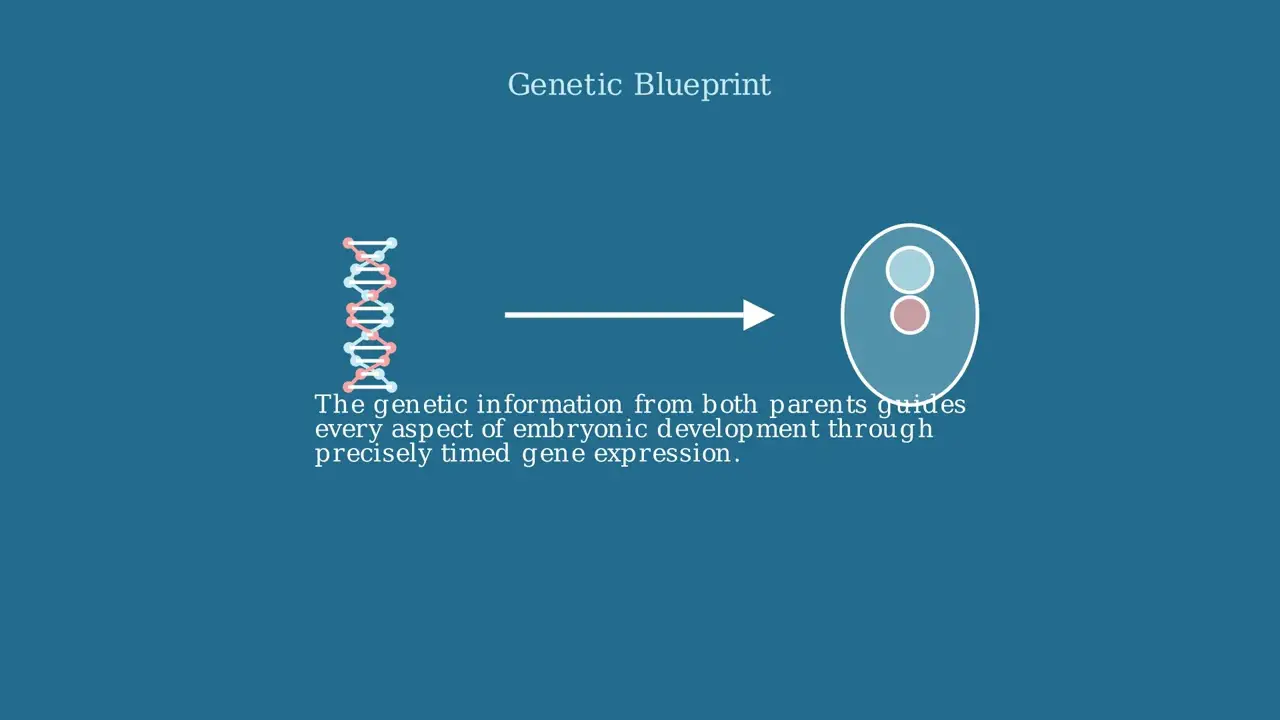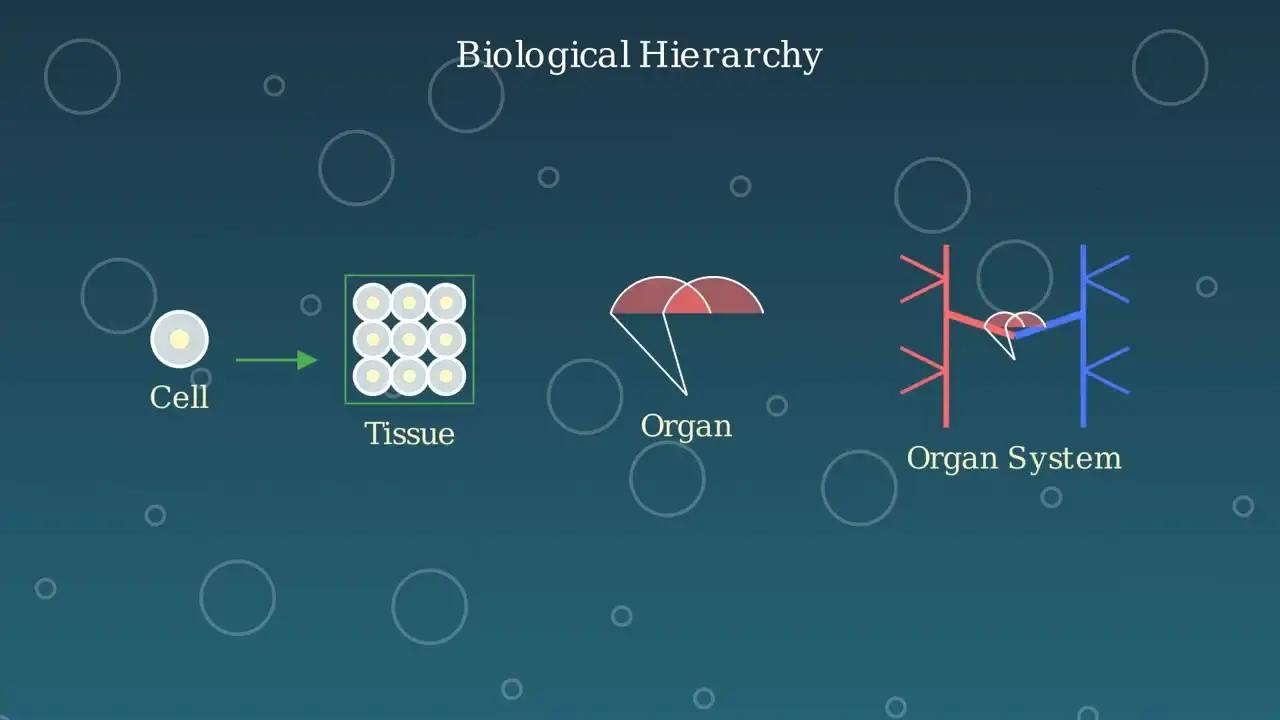Sourav Pan
Transcript
Welcome everyone! Today we’re diving into the fascinating yet troublesome world of bed bugs, scientifically known as Cimex lectularius. These tiny creatures have been human companions for thousands of years, though not exactly the kind we’d choose!
Here’s what a bed bug looks like up close. These small, brown insects are about the size of an apple seed, with flat, oval-shaped bodies that are typically reddish-brown in color. Their flattened shape allows them to hide in incredibly tight spaces.
Now let’s break down those scientific terms. Hematophagous means blood-feeding – they need blood to survive and reproduce. Ectoparasite means they’re external parasites that live on the outside of their host. Simply put, they live on our skin and feed on our blood!
Bed bugs go through a complete life cycle, starting as eggs, then progressing through five nymph stages before becoming adults. At each stage, they need a blood meal to grow and develop. This diagram shows their circular life cycle – a process we’ll explore in detail later.
Here’s the key takeaway from our introduction: Bed bugs are specialized blood-feeding parasites that have evolved specifically to live with humans. Understanding their biology is the first step to effective control and prevention. In the following sections, we’ll dive deeper into their characteristics, behavior, and most importantly, how to deal with them.
What do bed bugs actually look like? Understanding their physical characteristics is crucial for proper identification and effective control.
Adult bed bugs are small, reddish-brown insects with a distinctive flattened oval shape. This close-up view shows their segmented body and characteristic coloration.
Bed bugs range from 4.5 to 7 millimeters in length. To put this in perspective, they’re about the size of apple seeds or a pencil eraser. This image shows bed bugs at various life stages alongside objects for scale comparison.
Bed bugs have six legs, two antennae, and a segmented abdomen. Notice they have no wings, which means they cannot fly. Their flat, wide body is perfectly designed for hiding in narrow spaces.
Their extremely flat bodies make bed bugs exceptional hiders. They can squeeze into spaces as thin as a credit card, hiding in mattress seams, cracks in walls, and furniture joints. This image shows how well they can blend with carpet fibers.
Remember these key identification points: bed bugs are apple seed-sized, reddish-brown, oval and flattened. They have six legs, two antennae, no wings, and are expert hiders that can fit into incredibly small spaces.
Understanding these physical characteristics will help you identify bed bugs and distinguish them from other insects. Their unique appearance and body structure make them well-adapted for their parasitic lifestyle.
One of the most common questions people ask about bed bugs is whether they’re dangerous. The answer might surprise you.
Here’s some good news: while bed bugs can carry various pathogens and microorganisms, scientific research has not proven that they transmit diseases to humans.
Unlike mosquitoes or ticks, bed bugs do not act as vectors for diseases like malaria, Lyme disease, or other infections. The transmission pathway from bed bug to human simply doesn’t occur.
However, this doesn’t mean bed bugs are completely harmless. While they won’t give you a disease, their bites can still cause significant problems for many people.
Bed bug bites can cause skin reactions, allergic responses, and significant psychological stress. These effects, while not life-threatening, can seriously impact a person’s quality of life and well-being.
When bed bugs bite humans, they cause both physical and psychological effects that can significantly impact quality of life. Understanding these reactions helps explain why bed bug infestations are so distressing.
The physical skin reaction to bed bug bites is called cimicosis. This medical term describes the characteristic pattern of red, itchy welts that appear on the skin after bed bugs feed on human blood.
Here we can see a real example of cimicosis on human skin. Notice the characteristic red, raised welts that appear after bed bug feeding. These bites often occur in exposed areas while sleeping.
Not everyone reacts the same way to bed bug bites. Some people may have mild reactions, while others can experience severe allergic responses including blistering, hives, or even systemic reactions requiring medical attention.
Beyond the physical discomfort, bed bug infestations create significant psychological stress. The knowledge that insects are feeding on you while you sleep can cause anxiety, paranoia, and severe sleep disruption.
This image perfectly captures the psychological distress caused by bed bug infestations. The anxiety of knowing these pests are in your bed can lead to insomnia, hypervigilance, and significant mental health impacts.
The combination of physical discomfort and psychological stress makes bed bug infestations particularly challenging. Treatment must address both the pest problem and the emotional trauma it causes.
Understanding these reactions helps explain why professional treatment is so important. Effective bed bug control addresses both the immediate physical symptoms and the long-term psychological wellbeing of those affected.
To understand bed bugs scientifically, we need to look at their taxonomic classification. This is like their address in the animal kingdom, telling us exactly where they belong among all living creatures.
Let’s start at the top with Kingdom Animalia. Bed bugs are animals, which means they are multicellular organisms that move around and consume other organisms for food.
Next is Phylum Arthropoda. This is a huge group that includes insects, spiders, crustaceans, and other creatures with jointed legs and external skeletons. Bed bugs share this classification with everything from butterflies to lobsters.
Moving down to Class Insecta, we narrow it down to true insects. Insects have six legs, three main body segments, and usually wings. This separates bed bugs from spiders and crustaceans.
Order Hemiptera is where things get more specific. These are the true bugs – insects with piercing and sucking mouthparts. This includes bed bugs, stink bugs, and water bugs, all of which feed by piercing and sucking fluids.
Family Cimicidae narrows it down even further to bed bugs and their close relatives. This family is specifically adapted for feeding on the blood of warm-blooded animals, particularly in their sleeping areas.
Finally, we reach the species level: Cimex lectularius. This is the common bed bug that infests human dwellings worldwide. The name ‘lectularius’ comes from Latin, meaning ‘of the bed’ – quite fitting for these bedroom invaders.
This complete classification shows us that bed bugs are highly specialized insects. They’ve evolved specifically to live alongside humans, which explains why they’re so well-adapted to our homes and sleeping habits.
Bed bugs have achieved something remarkable in the pest world – they’ve successfully colonized nearly every corner of our planet where humans live. Their global distribution is truly impressive and concerning.
This map shows the global distribution of bed bug infestations. Notice how the red dots are heavily concentrated in developed regions, particularly the United States and Europe, where human population density and travel are highest.
Let’s look at some key statistics about bed bug distribution. Philadelphia ranks as the number one US city for bed bug infestations, while Ohio leads as the state with the most bed bug problems. But the reality is, bed bugs are now found in every US state and most countries around the world.
Bed bugs are incredibly adaptable and can be found in many different environments. Single-family homes and apartments account for ninety-one percent of all infestations, making them the most common location. Hotels and motels represent sixty-eight percent of professional treatments, which makes sense given the high turnover of guests.
But bed bugs don’t stop there. They’re also found in hospitals and healthcare facilities, where they can spread between patients and staff. Even public transportation like buses, trains, and airplanes can harbor bed bugs, helping them spread from city to city.
The key takeaway about bed bug distribution is simple but important: bed bugs follow human populations. Wherever people gather, sleep, or travel, bed bugs can potentially establish themselves. This is why they’ve become such a global problem in our interconnected world.
Bed bugs are absolute masters of hide-and-seek. These tiny insects have perfected the art of staying hidden while remaining close to their food source – that’s you and me.
Let’s look at a typical bedroom and identify the most common hiding spots where bed bugs love to set up camp. Each numbered location represents a prime real estate spot for these unwanted guests.
Now let’s examine what an actual bed bug looks like up close. This is what you’re searching for when inspecting these hiding spots – small, brown, oval-shaped insects about the size of an apple seed.
Bed bugs have three main requirements for their ideal hiding spot. First, they need easy access to their food source. Second, they prefer tight, dark spaces where they feel secure. Third, they want to stay close to where humans sleep and rest.
The most common hiding places include mattress seams and box springs, bed frames and headboards, furniture cracks and crevices, behind picture frames, and in electrical outlets near beds.
Here’s a key takeaway: bed bugs can squeeze into spaces as thin as a credit card. They prefer locations within eight feet of where people sleep, as this gives them easy access for their nighttime feeding.
When inspecting for bed bugs, always check these areas carefully. Look for dark spots, blood stains, or the bugs themselves. Remember, they’re excellent at staying hidden, so thorough inspection is essential for early detection.
Understanding the bed bug life cycle is crucial for effective control. Adult bed bugs have a complex reproductive process that allows them to multiply rapidly under the right conditions.
Adult bed bugs require blood meals to survive and reproduce. After feeding, female bed bugs can lay approximately 5 eggs per day, typically hiding them in cracks, crevices, and other protected areas.
Here we can see actual bed bug eggs up close. These tiny, pearl-white eggs are about the size of a pinhead and are often laid in clusters in hidden locations like mattress seams and furniture cracks.
When eggs hatch, they become nymphs. Bed bugs go through exactly five nymph stages before reaching adulthood. Each stage is called an instar, and each one requires a blood meal to molt and progress to the next stage.
This diagram shows the complete life cycle with actual sizes. Notice how each nymph stage grows larger after feeding, and you can see the dramatic size difference between the tiny first stage nymph and the adult bed bug.
Under optimal conditions with temperatures above 72 degrees Fahrenheit, the entire life cycle from egg to adult takes approximately 37 days. However, this can be much longer in cooler conditions or when blood meals are scarce.
The key takeaway is that bed bugs have a rapid reproductive cycle when conditions are favorable. Understanding this life cycle helps explain why infestations can grow so quickly and why multiple treatments are often necessary to break the cycle.
Now let’s examine the nymph stages in detail. Bed bugs go through five distinct nymphal stages, and understanding these stages is crucial to comprehending their persistent behavior.
As we can see in this lifecycle diagram, bed bugs progress through exactly five nymphal stages, also called instars. Each stage represents a critical point in their development.
The critical factor in bed bug development is the blood meal requirement. At each nymphal stage, the bed bug absolutely must obtain a blood meal to molt and progress to the next stage.
Without a blood meal, nymphs cannot develop properly. Each successful feeding allows them to grow larger and progress through their development cycle.
This detailed view shows each nymphal stage with size references. Notice how dramatically the bed bug grows from the tiny first instar to the final fifth instar before becoming an adult.
This diagram clearly shows the feeding and molting process. The red arrows indicate when blood feeding occurs, while the black arrows show the molting process to the next developmental stage.
This biological requirement explains why bed bugs are so persistent in seeking out hosts. It’s not just preference – it’s survival. Without regular blood meals at each stage, they cannot complete their life cycle and reproduce.
When dealing with bed bug infestations, professional extermination is often the most effective and reliable solution. Pest control experts bring specialized knowledge, tools, and experience that make the difference between success and failure.
Professional exterminators offer several key advantages. They have specialized training to identify bed bug behavior patterns, access to professional-grade equipment, and the ability to conduct thorough inspections that untrained individuals often miss.
The inspection process is crucial for effective treatment. Professional exterminators conduct detailed visual inspections using specialized tools like flashlights and magnifying equipment. They know exactly where to look for bed bugs and their telltale signs.
Some professional companies use specially trained detection dogs. These canine teams can identify live bed bug infestations with up to 95 percent accuracy, often finding hidden populations that visual inspections might miss.
Professionals have access to multiple treatment methods. Chemical treatments use professional-grade insecticides applied with precision equipment. Heat treatments employ industrial heating systems that can raise room temperatures to lethal levels for bed bugs.
The key takeaway is that professional extermination offers significantly higher success rates than do-it-yourself methods. Professionals provide comprehensive treatment plans, follow-up monitoring, warranty protection, and safe application of all treatments.
When facing a bed bug infestation, professional extermination provides the expertise, tools, and follow-up care needed for complete elimination. The investment in professional treatment often saves time, money, and frustration in the long run.
Heat treatment is one of the most effective methods for eliminating bed bugs. This process uses controlled high temperatures to kill bed bugs at all life stages, including the hard-to-kill eggs.
The key to heat treatment is reaching and maintaining a temperature of at least 118 degrees Fahrenheit, or 48 degrees Celsius. This is the critical temperature where bed bugs cannot survive.
Professional heat treatment charts show exactly how temperature affects bed bugs. At 140 degrees Fahrenheit, bed bugs die within minutes. The treatment zone between 113 and 140 degrees ensures complete elimination.
Heat treatment is so effective because it kills bed bugs at every stage of their life cycle. Unlike chemical treatments that may not penetrate egg shells, heat destroys adults, nymphs, and eggs equally. The heat penetrates into cracks and crevices where bed bugs hide.
Professional heat treatment requires specialized equipment including industrial heaters, high-powered fans, and precise temperature monitoring devices. The process involves sealing the room, positioning equipment strategically, and maintaining lethal temperatures for at least 90 minutes.
Proper airflow is crucial for effective heat treatment. Professional technicians use fans and heaters to create convection currents that distribute heat evenly throughout the room, ensuring no cold spots where bed bugs could survive.
Heat treatment offers a safe, chemical-free solution that eliminates bed bugs at all life stages. When performed by professionals with proper equipment, it provides highly effective results in a single treatment, making it like giving bed bugs a deadly sauna they cannot escape.
While heat treatment is highly effective, cold treatment offers another powerful method for eliminating bed bugs. This approach is particularly valuable for items that cannot withstand high temperatures.
Cold treatment requires specific conditions to be effective. Items must be frozen at temperatures below zero degrees Fahrenheit, or minus eighteen degrees Celsius, for a minimum of four consecutive days.
Research has established precise temperature and duration requirements for eliminating bed bugs at different life stages. This scientific data shows the effectiveness of cold treatment across eggs, nymphs, and adults.
The freezing process kills bed bugs by forming ice crystals inside their cells. These crystals rupture cell membranes and stop all metabolic processes, leading to death within hours of exposure to freezing temperatures.
Cold treatment is ideal for items that cannot withstand high heat. This includes delicate fabrics like silk and wool, electronic devices, books and documents, and children’s stuffed animals. These items can be safely frozen without damage.
Commercial freeze sprays offer an immediate cold treatment option. These products can instantly freeze bed bugs on contact, providing a chemical-free alternative that’s safe to use around sensitive areas and people.
Remember these key points about cold treatment: maintain temperatures below zero degrees Fahrenheit for at least four days, use this method for heat-sensitive items, and consider commercial freeze sprays for immediate application. Cold treatment provides an effective alternative when heat treatment isn’t suitable.
Chemical treatments use insecticides to kill bed bugs by targeting their nervous systems and other vital functions. However, this approach comes with significant challenges that every homeowner should understand.
These are typical insecticide products available for bed bug control. They come in various forms including sprays, powders, and aerosols. Each targets bed bugs through different chemical mechanisms.
Here’s the major challenge: bed bugs have developed resistance to common insecticides. When we spray, some bugs die, but resistant ones survive and reproduce, passing on their resistance genes.
There are three main types of insecticides used against bed bugs. Pyrethroids are most common but face high resistance. Neonicotinoids are newer but resistance is developing. Organophosphates are mainly for professional use due to their toxicity.
Professional exterminators use combination strategies, applying multiple insecticide types with different modes of action. This approach overcomes resistance by targeting various biological pathways simultaneously, making it much harder for bed bugs to survive.
Safety is paramount when using chemical treatments. Always read labels carefully, use only products specifically labeled for bed bugs, ensure proper ventilation, and keep children and pets away during application. Consider professional treatment for severe infestations.
Remember these key points about chemical treatments: resistance makes single insecticides less effective, professionals use multiple types for better results, safety precautions are essential, and professional treatment may be your best option for severe infestations.
Vacuuming is one of the most effective non-chemical methods for controlling bed bugs. This simple technique can physically remove bed bugs and their eggs from infested areas without using any harmful chemicals.
Here we can see a vacuum cleaner being used on a mattress, which is one of the primary locations where bed bugs hide. The key to effective vacuuming is using proper technique and equipment.
Vacuuming works through physical removal. The strong suction pulls bed bugs, eggs, and debris directly from cracks, crevices, and surfaces where they hide.
When done correctly, vacuuming can remove up to eighty percent of bed bugs from infested areas. The key is using a vacuum with strong suction power.
For effective bed bug vacuuming, you need a vacuum cleaner with strong suction power. Crevice tools help reach tight spaces, while brush attachments work well on fabric surfaces. Always use disposable bags for easy cleanup.
Focus your vacuuming efforts on areas where bed bugs commonly hide. Pay special attention to mattress seams, bed frame joints, and upholstered furniture. This close-up image shows the type of fabric textures where eggs and bugs can hide.
The most critical safety measure is disposing of the vacuum bag immediately after use. Bed bugs can survive inside vacuum bags and potentially escape, leading to re-infestation. Seal the bag and throw it away right after vacuuming.
Research shows that proper vacuuming can remove up to eighty percent of bed bugs from infested areas. This makes it an excellent supplement to other treatment methods, though it should not be used as the sole treatment approach.
Remember these key points about vacuuming for bed bug control: use strong suction equipment, focus on hiding spots like seams and joints, always dispose of bags immediately, and combine vacuuming with other treatment methods for best results.
Laundering is one of the most accessible and effective non-chemical methods for eliminating bed bugs from fabrics. The key to success lies in using the right temperature and technique.
The critical factor in laundering bed bugs is heat. Water temperature must reach at least 120 degrees Fahrenheit or 49 degrees Celsius to effectively kill bed bugs and their eggs.
This method works because bed bugs cannot survive exposure to high temperatures. Heat penetrates fabric fibers and destroys bed bugs at all life stages, from eggs to adults.
What items can you launder? Bedding, clothing, curtains, and any washable fabric that may have come into contact with bed bugs. Always check care labels first to ensure items can handle high heat.
The laundering process has two critical steps. First, wash items in hot water at 120 degrees Fahrenheit or higher. Second, dry them on high heat for at least 30 minutes to ensure complete elimination.
Understanding laundry symbols helps ensure you’re using the correct heat settings. Look for symbols indicating high heat for both washing and drying to maximize effectiveness against bed bugs.
Here are the key takeaways for successful laundering: Always use water at 120 degrees Fahrenheit or higher, follow with high heat drying, and handle items carefully to prevent re-infestation during the process.
Decluttering is one of the most effective non-chemical methods for controlling bed bugs. When we remove unnecessary items and organize our living spaces, we eliminate countless hiding spots that bed bugs depend on for survival.
Look at this dramatic transformation. The top image shows a cluttered bedroom with clothes scattered everywhere, creating countless hiding spots for bed bugs. The bottom shows the same room after decluttering – clean, organized, and much harder for bed bugs to find places to hide.
This chart reveals exactly where bed bugs prefer to hide. Notice that many of these locations – like furniture, nightstands, and baseboards – become much more accessible hiding spots when surrounded by clutter. Clothes, books, and personal items create additional shelter that bed bugs exploit.
Decluttering provides four major advantages in bed bug control. First, it makes visual inspection much easier – you can actually see potential problem areas. Second, it eliminates hiding spots that bed bugs depend on. Third, it gives pest control professionals better access for treatments. Finally, it makes ongoing cleaning and maintenance much more manageable.
Remember this key takeaway: a clean, organized space is a bed bug’s worst nightmare. When you remove clutter, you remove their ability to hide, reproduce, and spread throughout your home. Decluttering isn’t just about aesthetics – it’s a powerful pest control strategy that costs nothing but your time and effort.
Prevention is your first line of defense against bed bugs. Regular inspection is the most effective way to catch an infestation before it becomes a major problem. Today we’ll learn exactly what to look for and where to look.
First, let’s identify the key signs of bed bug activity. You’re looking for live bugs about the size of apple seeds, dark fecal spots, shed skins from molting, blood stains on bedding, and sometimes a sweet musty odor in heavily infested areas.
Here you can see actual bed bugs and their fecal droppings on a mattress surface. Notice the varying sizes and reddish-brown coloration of the bugs, along with the small black specks which are their waste products.
This inspection guide shows the critical areas to check in any bedroom. Focus on the mattress seams, box spring, bed frame, nearby furniture, and areas within eight feet of where people sleep. Bed bugs rarely travel far from their food source.
Here’s a heavily infested mattress showing exactly what you’re looking for. The dark spots and live bugs are concentrated along the seams where bed bugs prefer to hide. Follow these systematic steps for thorough mattress inspection.
Pay special attention to seams like this one. Bed bugs squeeze into the tiniest spaces during the day. You can see the fecal stains, shed skins, and even live bugs hiding along this fabric seam. This is exactly what early detection looks like.
Use these essential tools for effective inspection. A bright flashlight reveals hidden areas, while a magnifying glass helps identify small signs. Inspect monthly as routine maintenance, and always check after travel, guests, or acquiring used furniture.
Remember these key points about bed bug inspection. Early detection is your best defense against major infestations. Focus your efforts on seams, crevices, and known hiding spots. Make inspection a regular habit, especially after travel or when acquiring used items.
One of the most common ways bed bugs enter homes is through second-hand furniture. These tiny hitchhikers can easily hide in used couches, chairs, dressers, and beds, turning your bargain find into an expensive pest problem.
Used furniture poses a high risk because bed bugs can survive for months without feeding, hiding deep within cushions, seams, and wooden joints where they’re nearly impossible to detect without careful inspection.
This is what a real bed bug infestation looks like in used furniture. Notice how the bugs cluster in the seams and crevices of the cushion, with dark droppings scattered across the fabric. This level of infestation would be nearly impossible to clean effectively.
If you absolutely must purchase used furniture, follow this thorough inspection checklist. Use a flashlight to examine all seams, crevices, and joints. Look for dark spots which are bed bug droppings, reddish-brown stains from crushed bugs, and any signs of the insects themselves.
Here’s a close-up view of what you’re looking for. The white oval shapes are bed bug eggs, while the brown insects are the bed bugs themselves. They prefer to hide along seams where two pieces of fabric meet, making them difficult to spot during casual inspection.
The safest approach is to avoid upholstered second-hand furniture entirely. If you must buy used items, stick to hard furniture like solid wood or metal pieces. Quarantine any purchases in your garage before bringing them inside, and consider professional heat treatment for valuable pieces.
Remember this key takeaway: the cost of treating a bed bug infestation far exceeds any savings from buying used furniture. Professional extermination can cost thousands of dollars, while a new piece of furniture is a one-time investment in your peace of mind.
The most effective way to eliminate bed bugs isn’t relying on just one method. Instead, professionals use an integrated pest management approach, or IPM, which combines multiple strategies for maximum effectiveness.
IPM follows a systematic five-step cycle. First, inspection to locate the infestation. Then identification to confirm we’re dealing with bed bugs. Next comes monitoring to track the extent of the problem. Action involves applying multiple treatment methods. Finally, evaluation to assess if the treatments worked.
IPM combines different treatment methods that work better together than alone. Heat treatment kills bugs instantly, chemical treatments provide residual protection, and physical removal eliminates bugs and eggs from hiding spots.
A key part of IPM is thorough inspection and ongoing monitoring. Professional inspectors use flashlights and magnifying tools to find bed bugs in their hiding spots. This monitoring continues after treatment to ensure the infestation is completely eliminated and doesn’t return.
IPM is more effective because it addresses bed bug infestations from multiple angles. It achieves higher success rates while reducing reliance on pesticides. This approach minimizes chemical exposure for residents and focuses on long-term prevention rather than just quick fixes.
Remember these key points about integrated pest management. IPM combines multiple treatment methods for maximum effectiveness. It follows a systematic approach of inspection, identification, monitoring, action, and evaluation. Most importantly, IPM focuses on long-term prevention while reducing pesticide use and improving success rates.
While do-it-yourself methods can provide some relief, professional intervention is often the key to truly effective bed bug control. Understanding when and why to call in the experts can save you time, money, and frustration.
Do-it-yourself approaches often fall short because bed bugs are expert hiders. They can squeeze into cracks as thin as a credit card, making them nearly impossible to find without proper training and equipment.
Professional pest control experts bring years of training and experience. They know exactly where bed bugs hide, how they behave, and which treatment methods work best for different situations.
Professionals have access to specialized equipment that isn’t available to consumers. This includes industrial heat treatment systems, professional-grade insecticides, and monitoring devices that can detect even small populations of bed bugs.
The difference in success rates is dramatic. While DIY methods might eliminate thirty to fifty percent of bed bugs, professionals typically achieve ninety to ninety-five percent success rates because they target all life stages and follow up to ensure complete elimination.
Beyond elimination, professionals provide valuable prevention advice and long-term management strategies. They can create customized prevention plans, establish monitoring schedules, and educate you about risk factors to prevent future infestations.
Remember these key points: Professional intervention ensures complete elimination, experts have specialized knowledge and equipment, success rates are significantly higher with professionals, and long-term prevention strategies actually save money over time by preventing costly re-infestations.
Bed bug infestations are experiencing a dramatic surge worldwide. Recent data shows these persistent pests are making a significant comeback, creating challenges for homeowners, hotels, and pest control professionals alike.
Experts are predicting a staggering sixty-seven percent year-on-year increase in bed bug infestations for twenty twenty-five. This represents one of the most significant surges in recent decades.
Two primary factors are driving this surge. First, increasingly warm weather due to climate change is accelerating bed bug reproduction cycles, allowing them to breed faster and survive in previously inhospitable climates.
Second, the return of increased travel and tourism post-pandemic has created more opportunities for bed bugs to hitchhike between locations, spreading infestations across cities and countries.
Cities like Las Vegas and Paris have been particularly hard hit. Las Vegas, with its massive hotel industry and constant flow of tourists, has seen significant infestations affecting major properties along the strip.
Paris has also experienced notable problems, with bed bug concerns affecting Olympic preparations and raising alarm about infestations in public transportation and accommodations.
With this surge in infestations, it’s more important than ever to stay vigilant. The key is early detection and prevention through careful inspection of accommodations, especially when traveling.
Remember, bed bugs are excellent hitchhikers and can easily spread through luggage, clothing, and personal belongings. Taking preventive measures now can save you from dealing with a costly and stressful infestation later.
The National Pest Management Association, or NPMA, is the leading organization dedicated to protecting public health from pest-related issues. Each year, they spearhead an important educational initiative.
Every year during the first week of June, from June first through June seventh, the NPMA organizes Bed Bug Awareness Week. This dedicated time focuses on educating the public about these persistent pests.
Bed Bug Awareness Week focuses on three critical areas. First is prevention – learning how to stop infestations before they start. Second is detection – recognizing the early warning signs of bed bugs. Third is control – understanding effective treatment and elimination methods.
During Awareness Week, people learn about the bed bug life cycle, from eggs through five nymph stages to adults. Understanding this cycle helps in both detection and treatment planning.
Educational materials also cover the key signs of bed bug infestations – including bite patterns, stains, smells, and actually seeing the bugs themselves. Early detection is crucial for successful treatment.
Awareness Week includes practical training on how to inspect for bed bugs. People learn to use flashlights, check mattress seams, look for stains and blood spots, and thoroughly inspect cracks and crevices where bed bugs hide.
The core message of Bed Bug Awareness Week is that knowledge is power. When people understand bed bugs, they can detect problems early, prevent infestations, make informed treatment decisions, and reduce the fear and anxiety that often comes with bed bug encounters.
So mark your calendar for the first week of June. Bed Bug Awareness Week is the perfect time to educate yourself, your family, and your community about these persistent pests and how to deal with them effectively.
So, there you have it – a comprehensive overview of Cimex lectularius, the notorious bed bug. Let’s wrap up with the most important points you need to remember.
Remember, bed bugs are hematophagous ectoparasites. This means they are external parasites that feed exclusively on blood. They’re most active at night and are masters at hiding in the smallest cracks and crevices.
While bed bugs don’t transmit diseases, they can cause significant health impacts. Their bites lead to itchy, inflamed reactions and can trigger allergic responses. Perhaps most importantly, they cause psychological stress, sleep disruption, and anxiety.
Prevention is absolutely key when it comes to bed bugs. Regular inspection, early detection, and professional intervention when needed are your best strategies. Remember, Integrated Pest Management approaches work most effectively.
Stay informed, stay vigilant, and remember that knowledge is your best weapon against bed bugs. With the right prevention strategies and professional help when needed, you can keep those bed bugs at bay!
Study Materials
No study materials available for this video.
Helpful: 0%
Related Videos










- Text Highlighting: Select any text in the post content to highlight it
- Text Annotation: Select text and add comments with annotations
- Comment Management: Edit or delete your own comments
- Highlight Management: Remove your own highlights
How to use: Simply select any text in the post content above, and you'll see annotation options. Login here or create an account to get started.